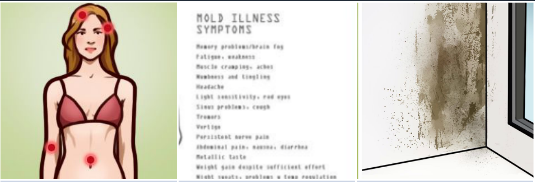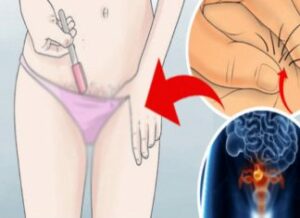. Did you know that you can complain about some health problems and they can occur as a result of mold growing in your home? These problems include flu, cold, memory, breathing and other similar symptoms. Unfortunately, you can’t see or smell the mold, but you can detect it through some tips you are going […]

.
Did you know that you can complain about some health problems and they can occur as a result of mold growing in your home? These problems include flu, cold, memory, breathing and other similar symptoms.
Unfortunately, you can’t see or smell the mold, but you can detect it through some tips you are going to learn in this article.
.
Where does the Mold grow?
Molds can grow in the corner near the shower, in the showerhead and it the entire bathroom, especially if it is not properly ventilated. It can attach to papers, books, furniture, carpets, clothes, pets and shoes. Mold can circulate in the air system, and particularly if you don’t change your filters often.
Molds grow in humid, warm and damp locations, both outside and inside. Mold can be a problem even if you live in dry areas such as Nevada or Arizona. Moreover, it can occur as a consequence of floods, poorly ventilated bathrooms, and water leaks.
Half of all the buildings in America are water-damaged, which leads to mold growth and possibly mold illness. The majority of people spend quite a lot of time in their homes or at their workplace, so the chances of mold exposure are quite high.
Why you should you take action on this issue?
Chronic Inflammatory Response Syndrome (CIRS) is a category of illnesses and mold toxicity falls in this category. Ritchie Shoemaker, MD, who is the author of several books, knows everything about mold.
He explains that CIRS is a chronic and acute systematic inflammatory response, which is acquired after an exposure to an environment of a building which is water-damaged with resident toxigenic organisms, some of them inflammagens, actinomycetes, bacteria, and fungi.
Dr. Shoemaker added that 24% of people are not able to create adequate antibody responses. These are the ones who compromise more than 95% of individuals with illness caused by buildings which are water-damaged.
.
Symptoms Of Mold Illness
-Trouble with executive function and focus, brain fog and memory problems
-Fatigue, post exercise fatigue, malaise and, weakness
-Ice pick pain, persistent nerve pain, joint pain sans inflammatory arthritis, pains and aches and muscle cramping
-Tingling and numbness
-Headache
-Blurred vision, red eyes and light sensitivity
-Asthma-like symptoms, air hunger, shortness of breath, cough and sinus problems
-Vertigo
-Tremors
-Appetite changes, diarrhea, nausea and abdominal pain
-Weight gain and resistance to weight loss
-Metallic taste
-Night sweats and similar issues with regulation of the temperature
-Increased urination
-Static shocks
-Excessive thirst
This list proves that symptoms of mold illness can easily be mistaken for other illnesses and they can also go unnoticed. However, scientific evidence of 30 years point that mold can actually cause severe health problems.
What’s the best solution?
First thing is to start learning about mold illness. The other important thing is to test your home for mold. And don’t forget to find a clinician which is trained in the Shoemaker Protocol.
Source:
http://justnaturallyhealthy.com/2016/04/26/mold-illness-what-it-is-and-how-you-know-if-you-have-it/
http://www.gotmold.ca/2012/10/what-is-chronic-inflammatory-response-syndrome/
http://www.healthandlovepage.com/17-signs-of-mold-illness-and-how-to-tell-if-youre-at-risk/http://wisemindhealthybody.com/dr-gottfried/mold-illness-signs-symptoms/
.
.
.
.
.
.
.
.



